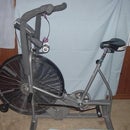Introduction: Substituting a Carbon Fiber Rod on a Sink Plunger Lift Rod or Pivot Rod and a DIY Seat Extractor
About every four years, the lift rod (also known as a pivot rod) on one Peerless sink set rusts and the end falls off. That means the plunger doesn't go up and down and you have to put something under the edge of the plunger so the sink drains.
If you are the original owner, you are in luck, Peerless faucets “are warrantied to the original consumer purchaser to be free from defects in material and workmanship for as long as the original consumer purchaser owns their home.” Just use their "Get Support & Repair Parts for Your Product" page Peerless Support. I gave them the model and described the problems, which also included dripping and weeping valves. The replacement parts arrived in under a week and it didn’t cost me a thing!
Now back to the end falling off. The OEM chrome plated stock rod is 3/16” OD and about 7-1/2” long. About 1-1/2” of the long end isn’t needed on my install. Since carbon fiber is touted as corrosion resistant, I bought a rod for under $3.00 USD and swapped the ball from the old rod.
It is an under 10 minute job, including removing and reinstalling the rod.
I will know in about four years if this works better than the stock part.
*
Just as a sidebar, if you have a dripping Peerless faucet set, get the Peerless replacement Stem Cartridge Kit. The non-OEM seats that I got at the big box store were harder and too wide at the base to seat, even with silicone grease. After spending an hour-and-a-half on what should have been a 30 minute job, I put the old parts back in and figured out that I could get Peerless to send me the correct replacement parts. Yep, it was a 30 minute job, just like I thought. Amazon also has the Stem Cartridge Kits for under $7.00 USD.
If you have a problem removing a seat, see Step 2 for a DIY extractor.
*
Equipment
Three small deep sockets (7 mm, 8 mm, and 9 mm in this case)
Non-marring hammer
Locking pliers
Parts
The old lift rod with ball
One 3/16” x 6-1/2” carbon fiber rod
**************************************************
Edit: 2016-10-15
This would also work well with stainless steel. I would go with 304 stainless.
**************************************************
Step 1: Disassemble and Reassemble
1. Slip the sockets over the long end of the rod.
2. Put the short end down on a hard surface (one you don’t mind if it gets marred).
3. Tap the sockets to move the ball down as far as it will go.
4. Grab the rod with locking pliers and twist the ball off with your hand.
5. Mark the back edge of where the ball needs to be on the carbon fiber rod (in my case a piece of tape).
6. Slip the ball onto the rod the same direction it came off. The ball is slightly countersunk on the side that goes onto the rod.
7. Tap the ball into place and finish using a deep socket.
8. If you used tape, remove it,
*
If anyone is interested, these are the dimensions of the OEM rod.
Rod OD 0.184" (3/16”)
Ball OD 0.705” (abt 18mm or 11/16”)
Ball injection site at 90 degrees to rod
Ball width 0.645” (abt 18mm) countersunk at the long leg
Short leg (to ball) 1.4”
Long leg (from front edge of ball) 6.072”
Long leg (from back edge of ball) 5.421”
Total length 7.480”
Step 2: Seat Extractor
If you can’t just flick the seat out with your fingernail, take a few seconds to make a seat extractor. Bend the tip of a heavy paperclip or a piece of coat hanger. The lip needs to be about 1/4” from the tip to the back of the wire. Don’t unroll the paperclip and add a bend to the coat hanger. A straight wire will slide right down into the supply line and you will end up having to disconnect the supply line to get it out. Save yourself some trouble.
I use the straight end of the coat hanger to help position the seat and spring.
NOTE: The seats picture are the one's that don't work. As you can see, they flair at the base. The Peerless seats are straight sided.













